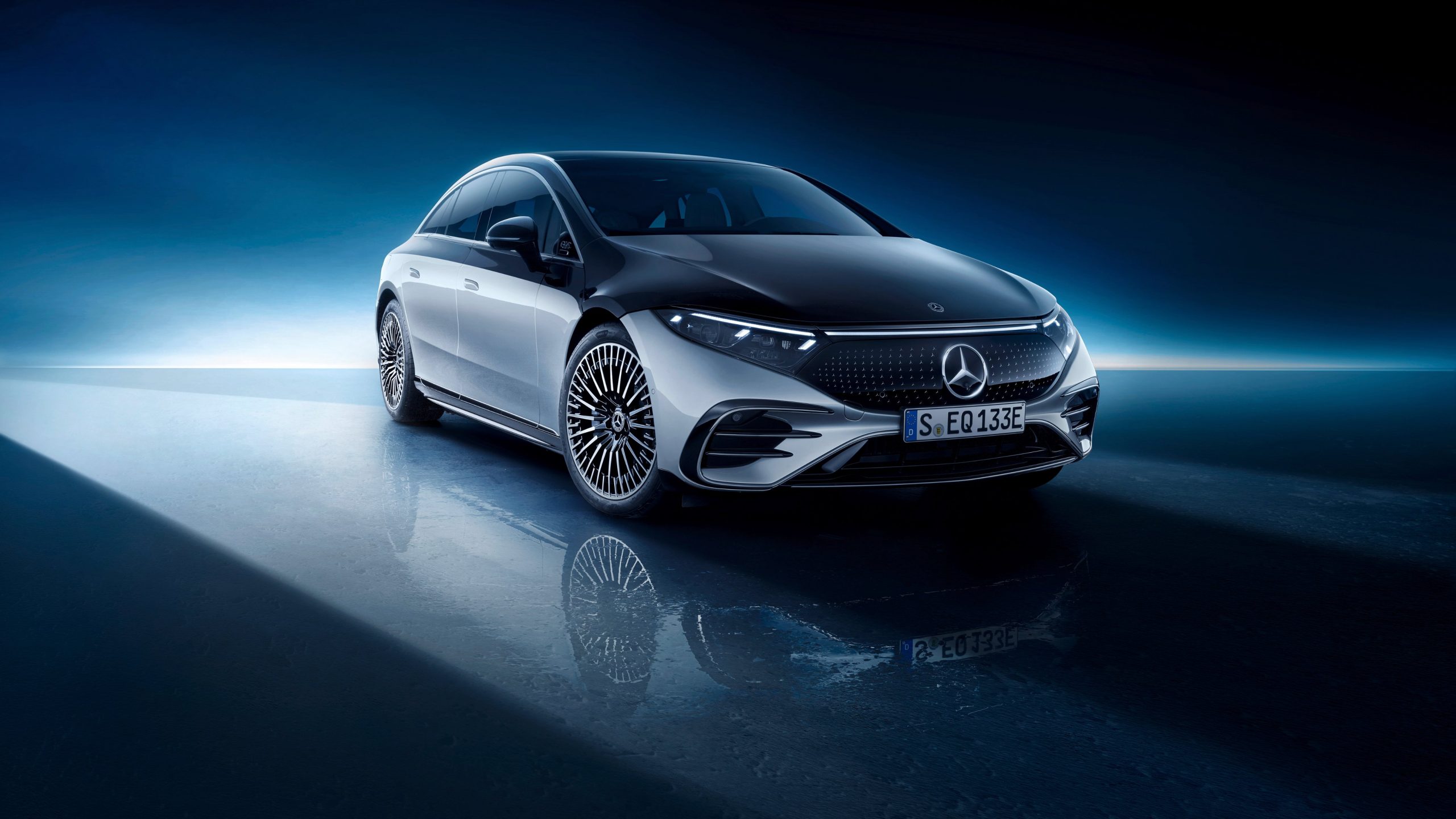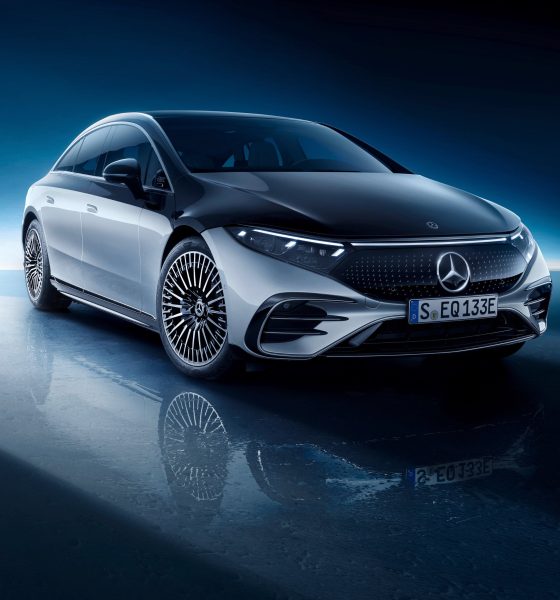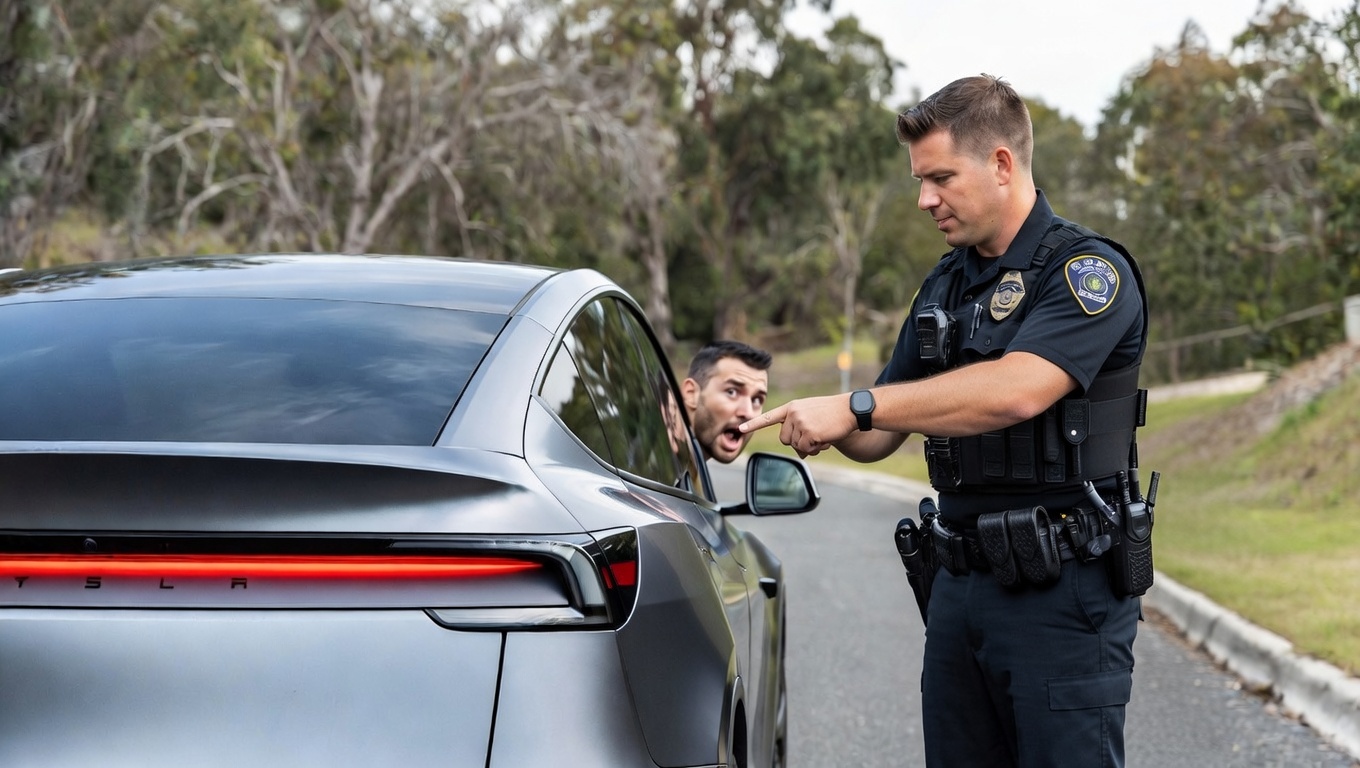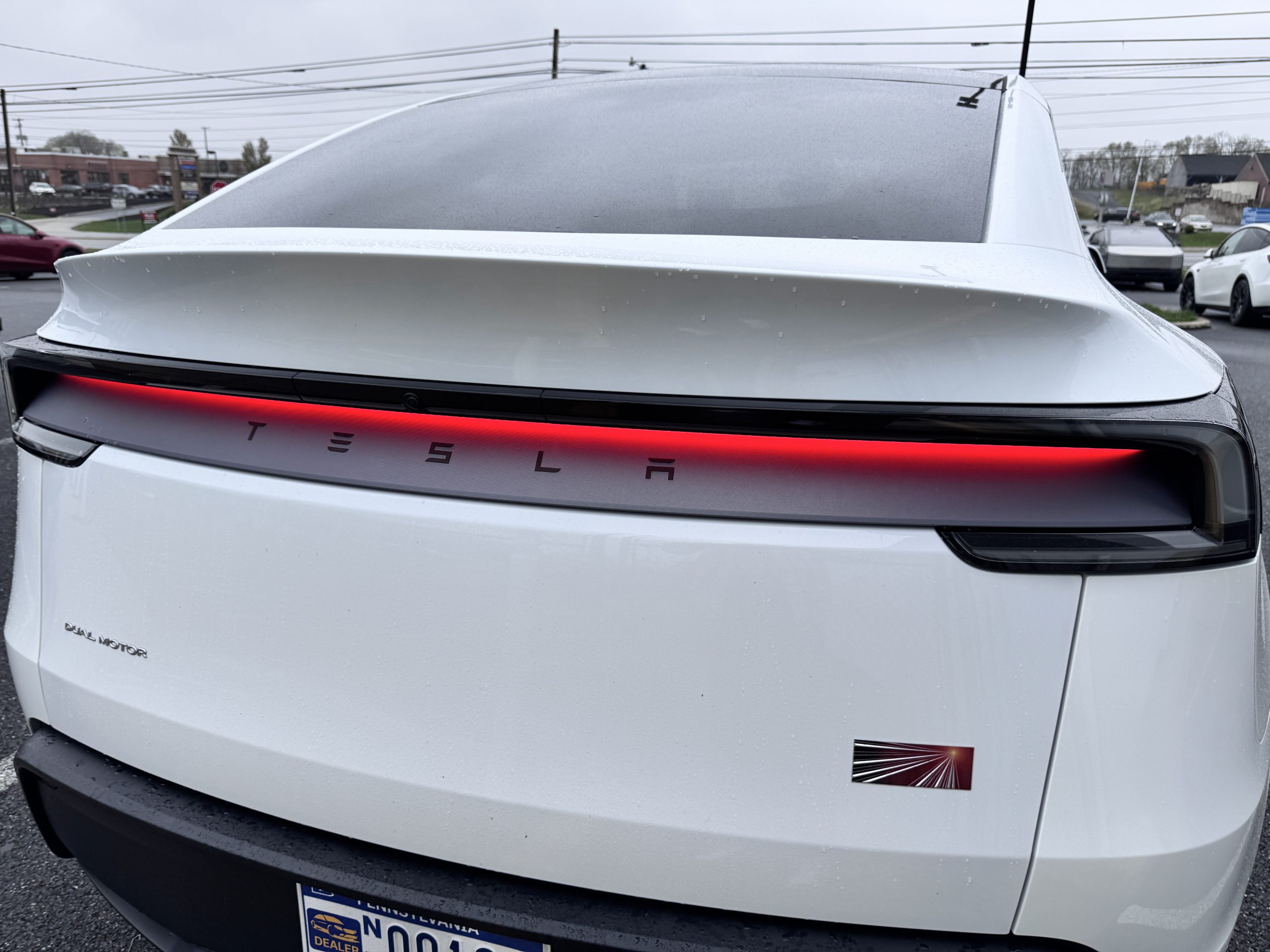

News
Mercedes-Benz unveils the all-electric EQS: 478-mile range, 516 HP, 107.8 kWh battery
Mercedes-Benz has unveiled its all-electric EQS luxury sedan, aiming to take over the luxury electric vehicle market by outpointing the likes of Tesla and Lucid, who also exist in the sector. While the Tesla Model S has been the main staple for those who require a touch of luxuriousness in the all-electric automobile sector, Mercedes-Benz has focused on its fancy and pretty gas-powered engines since its introduction in 1926.
The German Mercedes brand brought out the currently unpriced EQS in a lengthy and detailed press release on Thursday that outlined nearly any question one could ask. Apart from how much the vehicle will cost, Mercedes detailed everything from battery pack capacity, its WLTP-rated range, and its performance specifications, all of which are important figures for anyone interested in getting the most bang for their buck when driving a luxury vehicle. A high five-figure or low six-figure tag is expected to be introduced based on competitors in the same sector. The Model S from Tesla ranges from $79,900 to $149,990, not including incentives, while the Lucid Air ranges from $77,400 to $169,000, also not including incentives.
The EQS will come in two variants: the EQS 450+ and the EQS 580 4MATIC, which will be the more performance-capable build of the vehicle. Mercedes released the following table that outlines the finer points of both of the EQS variants in its press release.
|
EQS 450+ |
EQS 580 4MATIC |
||
| Drive system layout |
Rear-wheel |
All-wheel |
|
| Electric motor(s) |
Model |
Permanently excited synchronous motor(s) (PSM) | |
| Max. powertrain output7 |
kW |
245 |
385 |
| Max. torque transmission output |
Lb-ft |
406 |
611 |
| Acceleration 0-60 mph |
s |
5.5 |
4.1 |
| Top speed8 |
Mph |
130 |
130 |
| Battery energy content, usable (WLTP) |
kWh |
107.8 |
107.8 |
| Rated voltage |
Volts |
396 |
396 |
| Energy recovery capacity, max.9 |
kW |
186 |
290 |
| On-board charger (standard/option) |
kW |
9.6 |
9.6 |
| Charging time10 at wallbox or at public charging station (AC charging, 9.6kW) |
h |
11.25 |
11.25 |
| Charging time11 at a rapid charging station (DC) |
min |
31 |
31 |
| DC charging capacity, max. |
kW |
200 |
200 |
| DC charging in 15 minutes12 (WLTP) |
km |
Up to 300 |
Up to 280 |
| Vehicle | |||
| Length/width/height (USA) |
in |
205.4/83.7/59.5 |
|
| Track front/rear |
in |
65.6/66.2 |
|
| Turning circle (with rear-axle steering 4.5°/10°) |
ft |
39/35.7 |
|
| cd value from |
0.2013 |
||
Mercedes-Benz and Daimler CEO Ola Kaellenius said the all-electric EQS is ready for the most critical and picky customers that the automaker has dealt with in its history. “The EQS is designed to exceed the expectations of even our most discerning customers. That’s exactly what a Mercedes has to do to earn the letter ‘S’ in its name. Because we don’t award that letter lightly.”
The United States’ first models of the EQS will pack 516 horsepower and 770 kilometers or 478 miles of range, according to WLTP ratings.
The EQS has been in testing for a while. Last summer, Teslarati captured images of the EQS being benchmarked against some of its most notable competitors in Germany, including the Model S. The vehicle was outfitted with a camouflage wrap that concealed many of its exterior features, running spirited laps at the Mercedes Research and Development Center in Sindelfingen, Germany. The test facility is located outside of Stuttgart, where both Mercedes and Porsche are headquartered. Its wide, bulky build was reminiscent of the Tesla Plaid Model S that was spotted initially at the Nürburgring in Germany in 2019.
While somewhat reminiscent of other Mercedes-Benz models, the EQS’ rounded edges on the quarter panels give it a sportier look than the 2021 S-Class 450 SE, which is much more squared off at the corners of the vehicle.
Mercedes EQS EV spied benchmarking against Tesla Model S and Model 3
The interior of the car fits the luxury image that Mercedes has maintained for many years. Its futuristic cockpit includes the 56-inch wide “Hyperscreen” that Mercedes unveiled in January. The MBUX Hyperscree also offers a completely new way to control interaction and entertainment, bringing apps and functions into one simple but extensive touchscreen display.
The wait is almost over: Our all-electric #EQS will have its world premiere tomorrow at 6.00 p.m. (CEST).#MercedesEQ #ProgressiveLuxury pic.twitter.com/HFs5qdaWMX
— Mercedes-Benz (@MercedesBenz) April 14, 2021
It was important for Mercedes to maintain its own standards for the EQS. Not wanting to go with a minimalistic interior that Tesla has adopted for its vehicles, the EQS includes the typical bells and whistles that vehicles have equipped for decades.
“I think giving people that very futuristic feel that you’re actually driving something different will be appealing for some buyers,” Jessica Caldwell, executive director of insights at Edmunds.com, said to CNBC.
Mercedes’ press release regarding the EQS can be found here, it’s quite lengthy and will answer most of the questions some may have regarding the vehicle’s finer points.

News
Tesla launches hiring for Robotaxi program in its twentieth country
Overall, the hiring signals Tesla’s aggressive timeline for global dominance in autonomous mobility.

Tesla has launched a hiring initiative for its Robotaxi program in its twentieth country, as the company posted two new jobs in Thailand this week.
Tesla is hiring in Bangkok and Kowloon for the Vehicle Operator position, which is related to data collection, and is the first in Thailand, but the twentieth country overall, as the company tries to expand into other markets.
🚨 BREAKING: Tesla is hiring additional full-time Vehicle Operators in Bangkok, Thailand.
Previous openings were 6-month, part-time roles. These are equivalent to AI Safety Operator roles in the U.S. pic.twitter.com/R6LzoU1bos— Tesla Yoda (@teslayoda) January 5, 2026
Tesla has had active job postings for Vehicle Operator positions in the United States, India, Israel, Taiwan, Germany, the Czech Republic, Hungary, the UK, Finland, Switzerland, Sweden, the Netherlands, Austria, Spain, Norway, Italy, and Turkey in past listings.
These postings are not all currently available, likely because the roles have been filled.
Thailand is the most recent, and broadens the company’s potential path to expanding its ride-hailing program, which is only active in the United States in Austin, Texas, and the California Bay Area, so far.
These roles typically involve data collection, which assists in improving Autopilot and Full Self-Driving operation. Tesla’s self-driving programs utilize real-world data that is accumulated and stored, observing vehicle and traffic behavior, as well as tendencies that are performed by human drivers to help increase safety and overall performance.
Overall, the hiring signals Tesla’s aggressive timeline for global dominance in autonomous mobility. Although the company has several high-profile rivals and competitors in the field, it has established itself as a main player and a leader in the development of autonomous technology, especially in the U.S., as its FSD suite is refined on almost a weekly basis.
The Full Self-Driving suite is available in seven countries and territories currently, including the U.S., Canada, China, Mexico, Puerto Rico, Australia, and New Zealand. Its biggest goal for expansion is currently the European market, where regulatory hurdles have been the main bottleneck prolonging its launch on the continent.
Tesla has performed months of testing in various European countries, including France and Spain, and does have support in some areas from various regulatory agencies. However, the company is hoping to get through this red tape and offer its suite in Europe for the first time, hopefully this year.
News
Tesla China rolls out Model Y upgrades, launches low-interest financing
These strategies are aimed at improving the ownership experience and keeping vehicle pricing competitive in the world’s largest electric vehicle market.

Tesla has rolled out minor updates to the five-seat Model Y in China, upgrading the vehicle’s center display to a higher-resolution 16-inch 2K screen. The electric vehicle maker also introduced attractive financing options, including 7-year low-interest rates, to offset the new purchase tax on EVs.
These strategies are aimed at improving the ownership experience and keeping vehicle pricing competitive in the world’s largest electric vehicle market.
Five-seat Model Y gets larger, better display
With its recent update, all three variants of the five-seat Model Y now feature an upgraded 16-inch 2K resolution center display, which replaces the vehicle’s previous 15.4-inch 1080p panel. This screen was already used in the six-seat Model Y L, and it offered improved visual clarity. Tesla China has also updated the Model Y’s headliner to black, giving the vehicle a sleeker appearance.
Prices of the five-seat Model Y remain unchanged at RMB 263,500, RMB 288,500, and RMB 313,500 for the respective trims. This update enhances the cabin experience as domestic rivals are already adopting high-resolution screens. As noted in a CNEV Post report, some domestic automakers have begun rolling out vehicles equipped with 3K-resolution displays.
New financing offers
Tesla also launched ultra-long-term financing offers for its locally produced models in China, which include the Model 3 sedan, the five-seat Model Y, and the six-seat Model Y L, through January 31, 2026. The 7-year option features an annualized fee rate as low as 0.5%, which is equivalent to 0.98% interest. This is expected to save customers up to RMB 33,479 ($4,790) compared to standard rates.
A 5-year zero-interest plan is also available, and it has been extended to the Tesla Model Y L for the first time. These incentives help offset China’s new 5% purchase tax on New Energy Vehicles (NEVs) in 2026-2027. Some of Tesla’s rivals in China have announced in recent months that they would be covering the purchase tax owed by buyers early this year.
News
Tesla Model Y’s new feature lands driver in hot water from police officer
“He gave me a warning and told me to get it fixed.”

Tesla Model Y received a slew of both interior and exterior upgrades when the company refreshed its best-selling vehicle last year.
However, one of the more notable changes from an exterior perspective landed a driver in hot water with a local police officer, who was confused about the situation with the taillight bar and its ability to alert other drivers of a reduction in speed.

The new Tesla Model Y taillight with taillight glow
A Tesla Model Y owner in Indiana recently noted in a Facebook post that he was pulled over because a police officer thought the vehicle’s taillights were not turned on. However, the Model Y’s new rear light bar, which spans across the entire width of the vehicle, is more than visible in both light and dark conditions.
The incident, which was first spotted by Tesla Oracle, brings to light the interesting changes and perception of vehicle design that Tesla has brought forth with the new Model Y. We know some things might be head-scratching to some drivers, notably the Matrix Headlight technology present on the car, but this one truly baffled us.
The post stated:
“Just got pulled over for my tail lights not being “on” i told the officer it’s brand new. It has 1100 miles. I told him the red light bar is the taillight. The brake lights, both turn signals, and the red bar was on/worked. He told me that where the brake lights are, it should be illuminated there also. He gave me a warning and told me to get it fixed. Had anyone else had this kind of issue?”
Having the police officer tell a driver to “get it fixed” when it is a completely legal and functional design is pretty crazy.
However, the rear taillight bar, which glows and really gives the new Model Y a distinct difference between its previous iteration, is more than recognizable as a brake light and an indication of a reduction in speed.
Regulatory language for vehicle designs indicates that the light has to reach a certain number of lumens, or brightness. Lars Moravy indicated this on an episode of Jay Leno’s Garage when he and Tesla Chief Designer Franz von Holzhausen explained some of the details of the new Model Y.
This issue sparks some interesting dialogue people can have about vehicle design, and as more and more companies are adopting these futuristic looks, it seems law enforcement will have to get with the times and familiarize themselves with the regulations regarding exterior lights.








